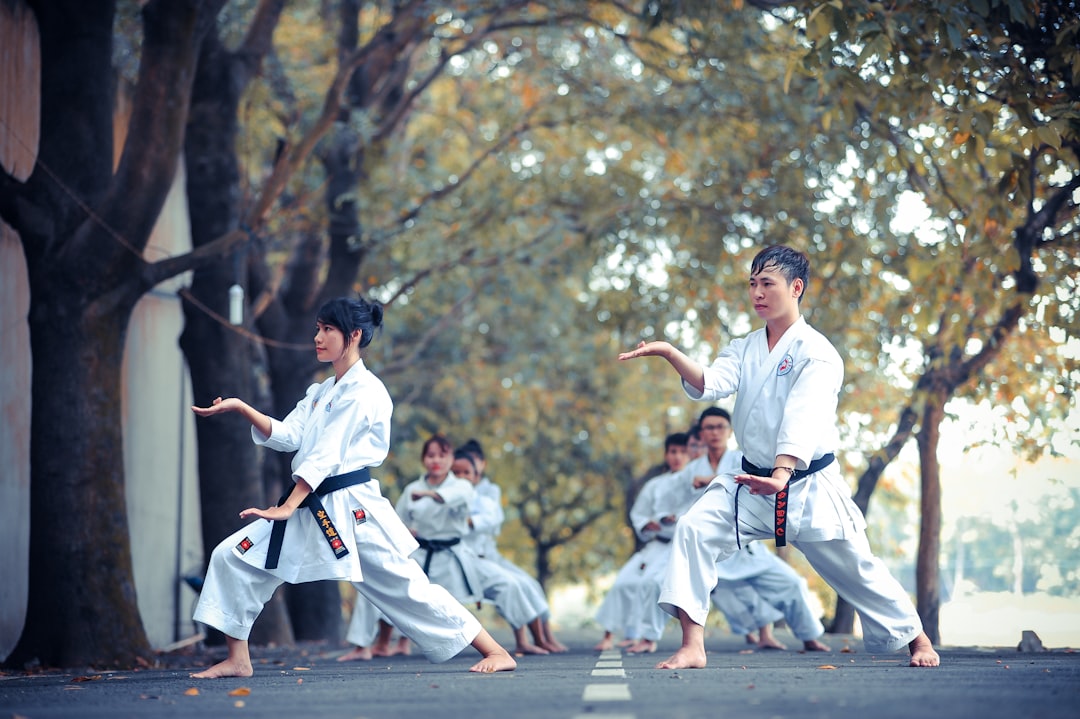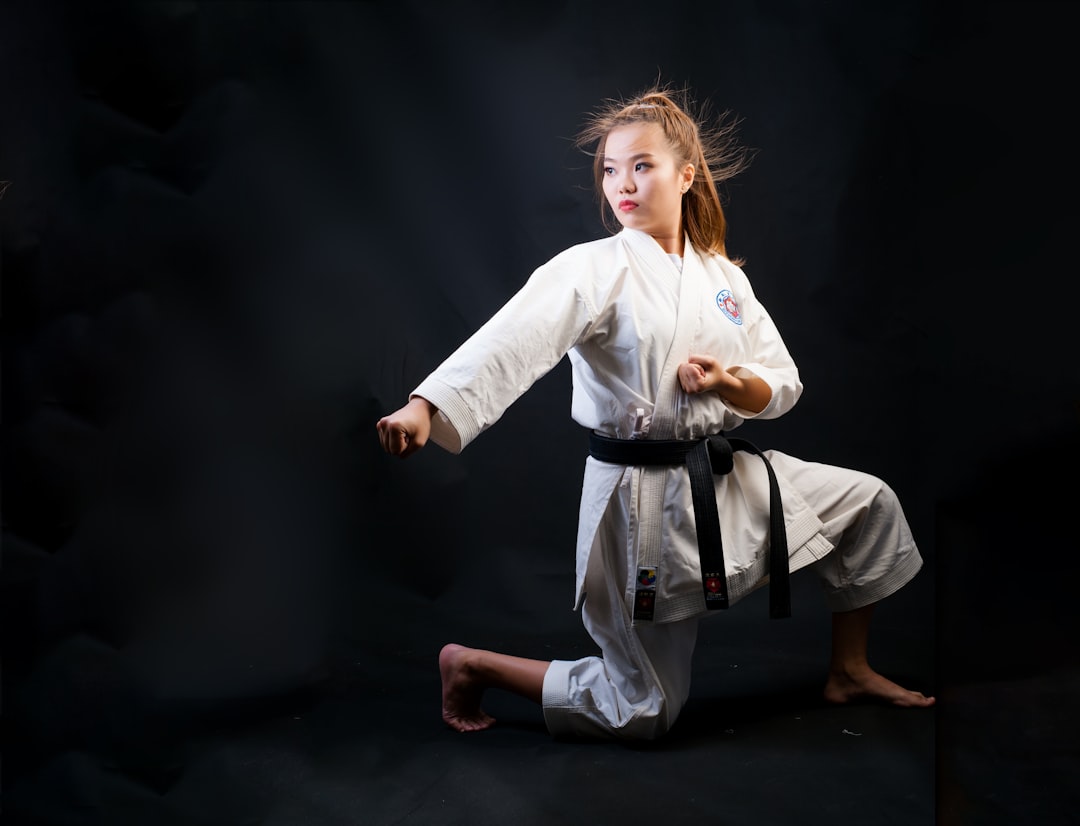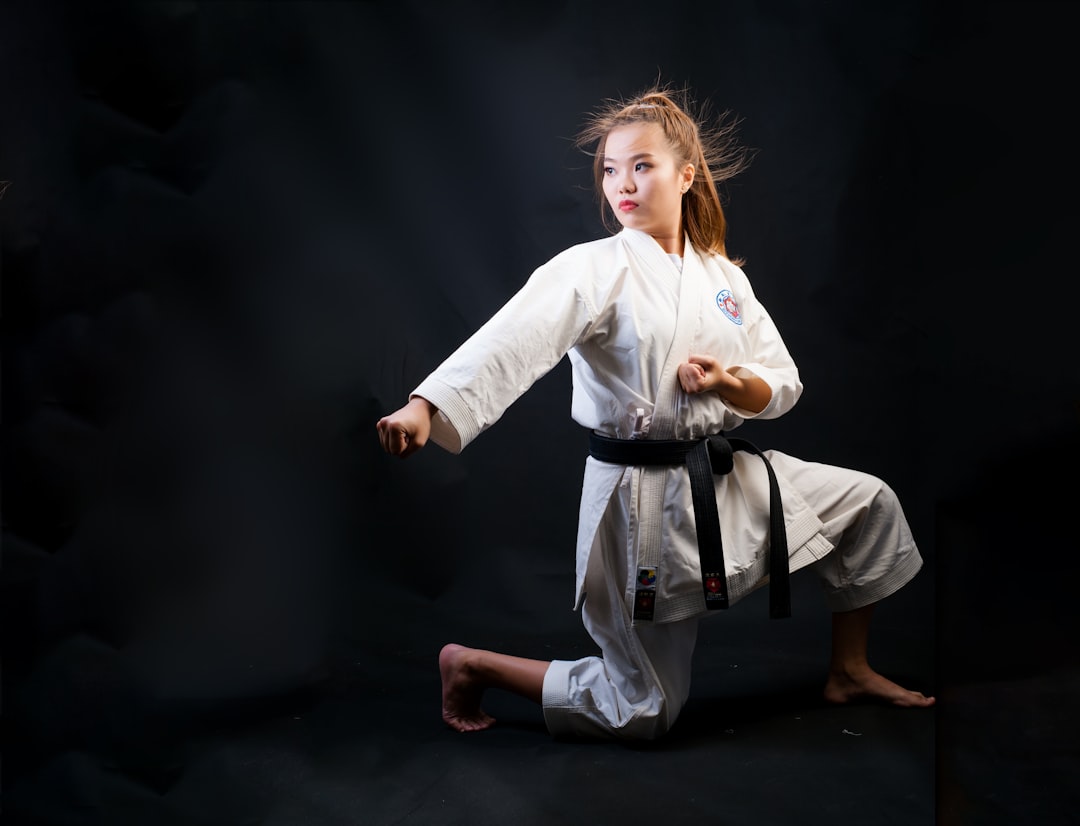Karate's traditional uniform, known as a keikogi, dogi, or karategi, is an essential element of the discipline, emphasizing functionality and symbolism. The uniform, consisting of a jacket, trousers, and obi, allows for full range of motion and reflects the practitioner's rank through a color-coded belt system. Historically rooted in Okinawan farm and fishing attire, the karate gi has evolved over time to meet modern competition standards, featuring a lighter, more tailored jacket and flat-front trousers. The World Karate Federation (WKF) strictly regulates competitive uniforms to ensure consistency and fairness among athletes. These regulations cover color, fit, and branding, distinguishing karate uniforms from those in other martial arts or sports. The karate uniform's name carries cultural significance and adapts across different styles like Shotokan, Kyokushin, and Goju-Ryu, emphasizing both the historical roots of martial arts and the demands of high-level athletic performance.
Karate practitioners around the globe adhere to a disciplined practice that extends beyond techniques and forms; it encompasses the ritualistic donning of a distinctive outfit. This article delves into the essence of this garb, commonly known as a karate uniform or Gi. We will explore its historical evolution, the significance behind its design, and the factors that influence its modern iteration. Join us as we unravel the story behind the karate uniform name and its role in the martial art’s rich tradition.
- Unveiling the Essentials: The Components of a Traditional Karate Uniform
- Evolution of the Karate Gi: From Ancient Roots to Modern Matches
- Factors Influencing the Style and Design of Karate Uniforms
Unveiling the Essentials: The Components of a Traditional Karate Uniform

When practicing the disciplined art of karate, donning the appropriate attire is essential to the experience and respect for tradition. A traditional karate uniform, often referred to as a “keikogi” or “dogi,” serves as a blank canvas that emphasizes the practitioner’s movements rather than a myriad of colors or patterns. This garment consists of a jacket, trousers, and a belt, known as an “obi,” each component playing a role in the functionality and symbolism within karate. The jacket, typically buttoned up the front, is designed to allow for full range of motion during practice, while the trousers are tailored for ease of movement, providing comfort and flexibility. The obi, tied around the waist, not only secures the uniform but also signifies the rank of the practitioner through different belt colors. Is it known as a “keikogi” in Japan or does it have another name in different karate styles? Indeed, while the term “keikogi” is commonly used in Japan, it may be referred to as a “dogi” in other martial arts such as judo and kendo. The term “karategi” is also used specifically for karate practitioners, emphasizing its unique identity within the broader spectrum of martial arts training attire.
Evolution of the Karate Gi: From Ancient Roots to Modern Matches

The evolution of the karate uniform, known as the gi, is a fascinating journey that reflects both the cultural significance and the practical demands of martial arts practice. Initially, practitioners in Okinawa wore garments that were similar to the traditional farm and fishing attire, which allowed for ease of movement during training. Over time, as karate expanded beyond its ancient roots and gained popularity worldwide, the design of the gi underwent modifications to suit the needs of modern competition. Today, the karate uniform is a standardized garment, adhering to specific measurements and fabrics that are recognized globally. What began as utilitarian clothing has transformed into a symbol of discipline and respect in the martial arts community.
The transformation of the gi is not just a story of changing styles; it’s also one of adaptation to different environments and regulatory requirements for competition. The top, or “jacketing,” which initially resembled a traditional kimono, evolved into a lighter and more functional version, with a closed collar and a more tailored fit. Similarly, the trousers, known as “karate hakama” when belted above the knee, became the straightforward flat-front pants we recognize today. The mat color of the gi also reflects its purpose, being designed to contrast with the tatami mats used in training and competition arenas. Are the specific dimensions and materials of modern karate uniforms regulated? Indeed, international karate federations dictate the exact measurements and types of fabric that a karate gi must adhere to for use in official matches, ensuring consistency and fairness among competitors.
Factors Influencing the Style and Design of Karate Uniforms

Karate uniforms, commonly referred to as ‘keikogi’ in Japan, serve a practical purpose while also embodying the rich traditions and principles of martial arts. The style and design of these outfits are influenced by several factors, including cultural significance, functionality, and international competition standards.
Cultural roots play a pivotal role in shaping the uniform’s aesthetics; for instance, what is the karate uniform name in different styles like Shotokan, Kyokushin, or Goju-Ryu? The traditional keikogi typically consists of a jacket and pants made from cotton or hemp, which are both durable and breathable. These materials allow for ease of movement during practice and competition, ensuring that the uniform accommodates the physical demands of karate. Additionally, international governing bodies like the World Karate Federation (WKF) establish regulations that dictate specific design elements for competitive keikogi, such as color, fit, and branding to maintain consistency and fairness across events. These regulations also help in identifying the authenticity of a uniform, distinguishing it from other martial arts or general athletic wear.
In concluding our exploration into the discipline of karate, one cannot overlook the significance of the attire that practitioners don—the karate uniform. Known as a “keikogi” or simply “gi,” this garment is more than mere clothing; it represents tradition, respect, and the martial spirit. Our journey through the essential components, the historical evolution, and the factors shaping its style and design sheds light on how the karate uniform has become an iconic symbol within the martial arts community. As a practitioner steps onto the mat, the uniform serves as a tangible connection to the practice’s origins and its ongoing transformation, embodying both the past and the future of this dynamic art. Understanding the karate uniform name is key to appreciating the depth of the tradition and the commitment of its practitioners.
